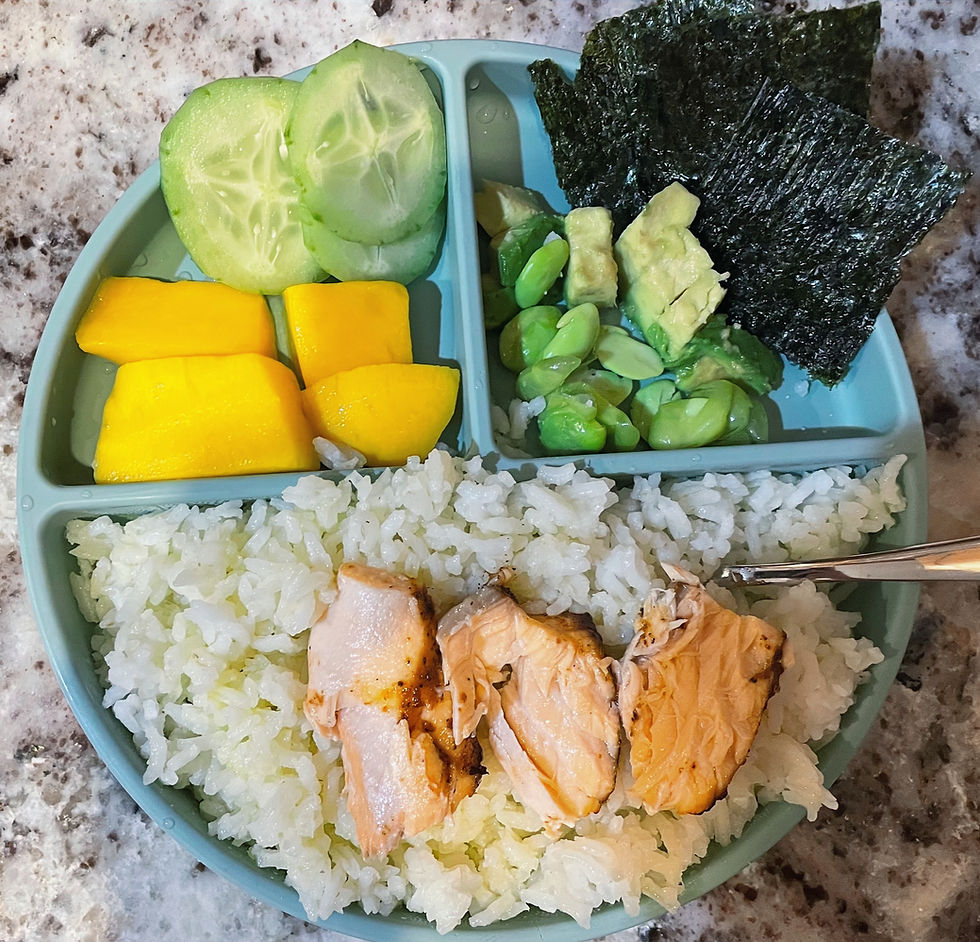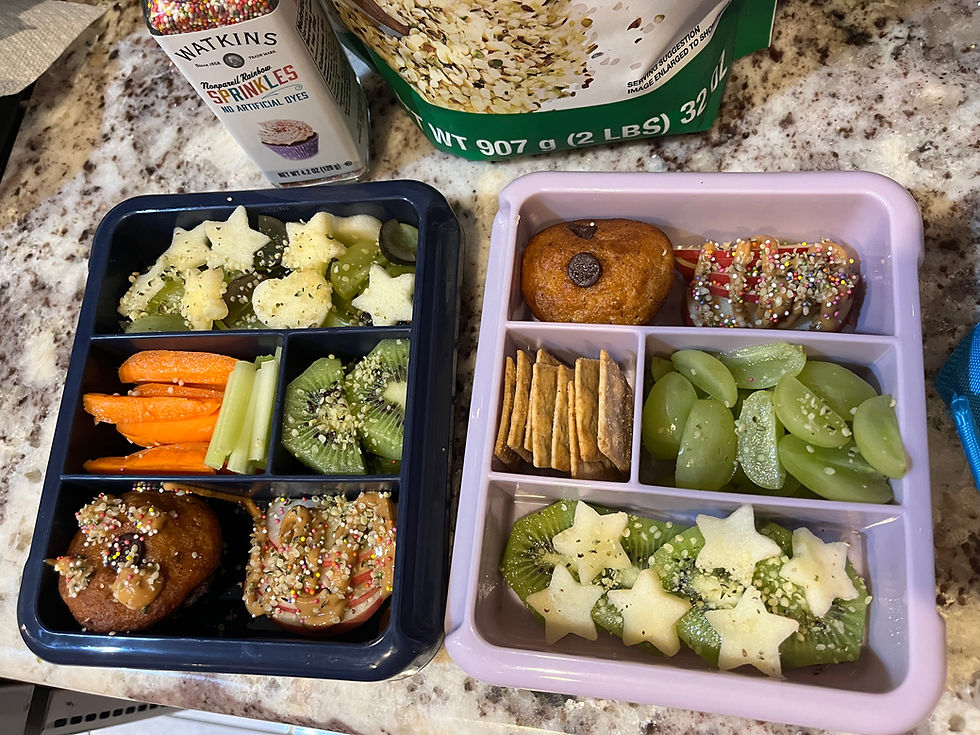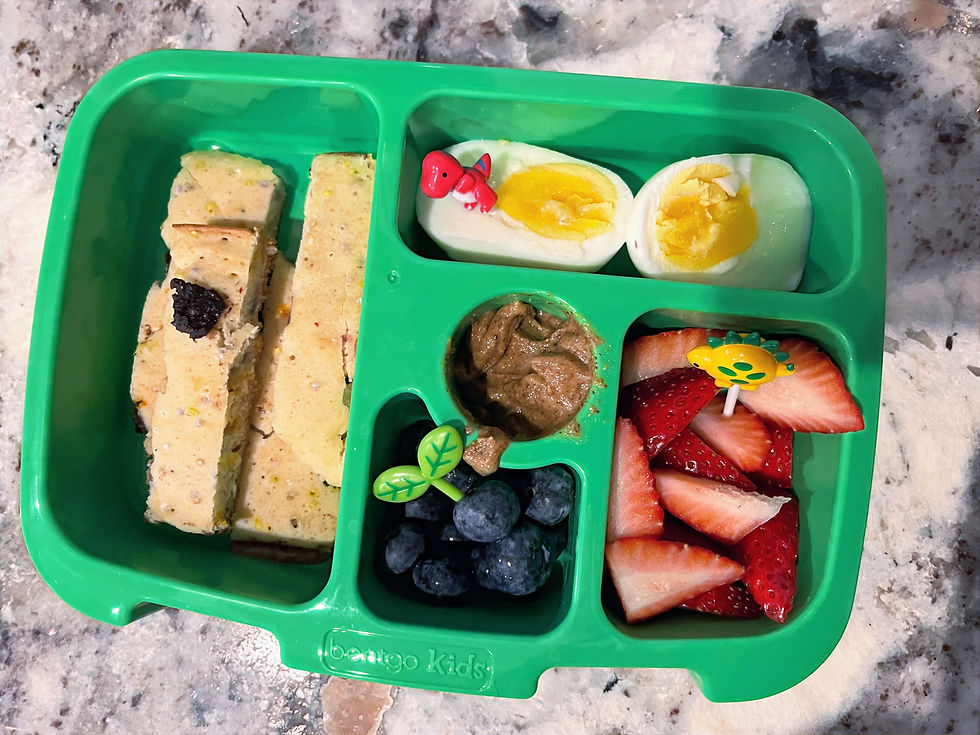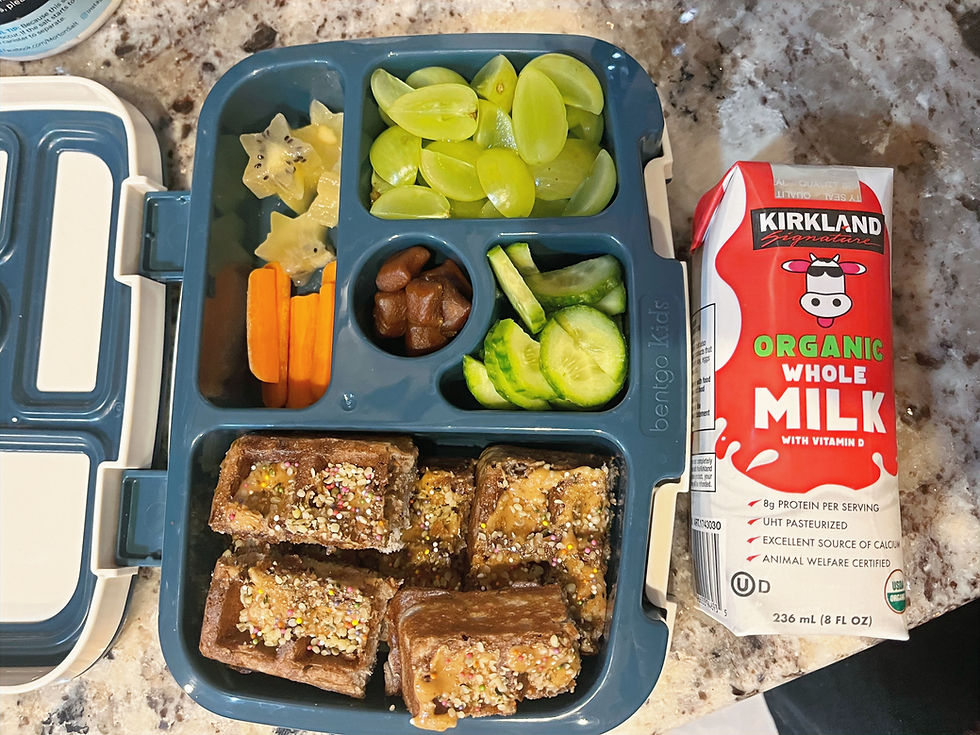Seeking Support: Feeding Littles with Cystic Fibrosis
- Carolanne Cimino
- Jan 24
- 6 min read
Updated: Jan 28
For many patients with Cystic Fibrosis, gaining and maintaining weight is tremendously difficult. Cystic Fibrosis is often categorized as a lung disease, but its devastating effects on the digestive system are of great significance. Historically, before modern medical advancements, infants born with CF had very small chances of survival due to extreme malnutrition. Even today, “failure to thrive” is one of the most common first presentations of CF in babies. Why does CF cause such difficulty with gaining weight, one might ask? The answer is multifaceted.
85% of people with CF are pancreatic insufficient- caused by the pancreatic ducts being clogged with mucus, preventing critical enzymes from being released. These enzymes are responsible for breaking down fat, protein, and even carbohydrates so that the body can digest and absorb nutrients from food. Secondarily to pancreatic insufficiency, people with CF have higher energy requirements. This higher energy requirement is due to fighting infections, coughing, and increased expenditure related to chronic inflammation and breathing efforts. The Cystic Fibrosis Foundation states that patients may need 1.5 to 2x more calories than someone without the disease.
Due to pancreatic insufficiency, Cystic Fibrosis patients must take pancreatic enzymes in pill form to digest and absorb nutrients from food. Pancreatic enzymes are arguably one of the most important medications used in CF patients. As a mother to a child with CF, I know personally how miraculous it was to see my newborn come to life when we started enzymes. He went from skin and bones to a plump squishy baby in a matter of weeks! Now while enzymes help their bodies digest and absorb nutrients, many patients will still encounter persistent malabsorption even at the highest dose. Symptoms of malabsorption include greasy, frequent, and/or bulky stools, bloating, gas, excessive hunger, and inadequate weight gain.
Your CF dietician is there to help you troubleshoot malabsorption. It is important to let your care team know if your child is experiencing symptoms of malabsorption. Our team encouraged us to send photos of any stools in question, and they would adjust my son's enzyme dosage accordingly. If your child encounters persistent greasy, frequent, and/or bulky stools, your pulmonologist or gastroenterologist may prescribe supportive medications to help. A proton pump inhibitor such as Omeprazole can help enzymes be more effective! Neutralizing the often hyper-acidic environment of CF patients' stomach acid is one way to help enzymes survive their journey to the small intestine. Your dietician may even suggest trying different brands of enzymes if malabsorption persists despite other measures. CF is a unique disease, and no two patients are exactly alike. During my son's first year, we tried several different enzymes and found a balance of medications that helped him thrive, with the help of our awesome care team. Your doctor and dietician are there to help you find a treatment plan that works best for your unique child.
Currently, the Cystic Fibrosis Foundation (CFF) recommends a high-fat, high-calorie diet for people with CF. Due to CF patients losing 3-4x the amount of salt through their sweat compared to those without the disease, it is also recommended to supplement salt. The CFF urges that for individuals under 21, a body mass index (BMI) at or above the 50th percentile should be maintained. Studies show a direct correlation to higher lung function for those who fall in this recommended range. However, please remember that genetics, infections, and modulator status greatly influence the achievability of maintaining a 50th percentile BMI. There are plenty of CF patients in excellent health, with great lung function who fall outside of this recommended BMI. Incorporating healthy and high-calorie foods is one concrete way that patients can work towards their BMI goals.
When grocery shopping for your child with CF, opting for the full-fat versions of foods is important. Low-fat, low-calorie, or “light” variations of foods ought to be avoided. For dairy products, my family purchases whole milk, heavy cream, full-fat Greek yogurt, full-fat sour cream, and full-fat cheese varieties. When we were avoiding dairy, we used full-fat coconut milk, coconut cream, full-fat coconut yogurt, or cashew-based cream products. While coconut products are great sources of fat, they should not be relied on as a source of protein. Soy and pea are two higher-protein plant-based milks to try!
Elevating a regular meal into a high-fat powerhouse can be simple. I like using several trusty ingredients:
Grass-fed butter is one of my favorite ways to add extra fat. Butter is highly palatable, and it goes great in everything. Just one tablespoon of butter can add 100 calories. Butter goes great in oatmeal, rice, vegetables, chicken, beef, and sandwiches; the possibilities are endless.
Avocado oil, olive oil, tallow, ghee, coconut oil, etc.
Canned coconut milk can be used in baked goods, casseroles, smoothies, etc. (Tip: try cooking rice in coconut milk instead of water, it’s a big hit with my kiddos.)
Heavy cream! At around 50 calories per tablespoon, we add it anywhere we can!
Hemp hearts! We call them “sprinkles” and use them in various dishes.
Peanut butter (we look for brands with peanuts + salt as the only ingredients.)
Ground nuts/seeds (another sprinkle option!)
With this many delicious options, fortifying foods will become like second nature.


In addition to staying well-fed, staying hydrated is extremely important for patients with CF. Offering beverages that are high in calories alongside water can be very helpful for weight gain. Whole milk and Kate Farms' “pediatric peptide” weight gain shakes have aided in my child's growth tremendously. Your dietician can provide recommendations for supplement shakes if needed, and non-medical weight-supportive smoothies can quickly be blended at home.
Most developing children require more than just 3 square meals a day. Try to offer your child at least 2 snacks in addition to meals. Snacks given too close to meals can decrease appetite, so I aim to space them at least two hours from mealtimes and avoid grazing. Some high-calorie snacks my child loves are:
peanut butter + dates, apples
avocado oil potato chips + cottage cheese
smoothies (can freeze into popsicle molds for added fun!)
crackers + cheese
almond butter and jelly sandwich + a cup of whole milk
organic lunch meat, olives, and cheese
veggies with hummus + ranch
berries mixed with heavy cream and a drizzle of honey (don’t feed honey to babies under 1.)
chia pudding: combine ½ cup full-fat yogurt + ½ cup canned coconut milk + 3 tbsp. chia seeds (Refrigerate overnight. May add maple syrup, honey, mashed banana or another preferred sweetener)
Almond flour tortilla cheese quesadillas
Muffins with butter
Banana split yogurt bowls (banana, yogurt, granola, dye-free sprinkles, etc.)
Please don't forget that snacks do not have to be “snack foods,” they can just be mini meals that your child loves.


Now that you have some ideas and ways to add calories to your child's diet, comes the next obstacle: getting them to eat these things! I think it's important to keep meals low-pressure. I avoid dinnertime power struggles by keeping things light and not putting too much stress on our son to “finish his plate.” However, I do have a few tricks to help encourage him to! Adding a bit of novelty to mealtime can make a huge difference in your child's desire to eat. Some of my favorite ways to spice up mealtimes are:
Cutting foods into fun shapes (shape cutters can be found on Amazon.)
Adding dye-free sprinkles to oatmeal, yogurt, fruit, toast, peanut butter, etc.
Special plates, bento boxes, bowls
Fun utensils! (Search “fun kids utensils” on Amazon for endless cute finds!)
Decorative food picks (for toddlers, stick to larger varieties to avoid choking hazards!)
Adding interest to the plate can capture your child's attention and make mealtime fun!


When dealing with a chronic illness that affects weight, it is easy to overanalyze and even internalize how much your child eats, or how much weight they are gaining. Remember, your child has CF, and it's not your fault that feeding them feels harder. It is harder! CF parents: I’m proud of you, and I see the work you do behind the scenes to help your child gain weight. Especially in the toddler years, it can be helpful to look at what your child is consuming throughout the week rather than worrying about one particular day. Whether they are overcoming an illness, or going through a picky phase, their appetite will vary. Kids are human, and my son has had many meals where more food ends up on the floor than in his belly. As CF parents, we can offer a variety of balanced high-calorie options, and sometimes, they may still struggle to gain weight. When in doubt, your CF care team is the best resource for you to help decide the next step in your child's weight gain journey.
The purpose of this blog entry is solely for informational purposes and should not be taken as medical advice. The content of this blog contains the opinions of the author and does not reflect the views of The Nebraska Regional Cystic Fibrosis Care Center.
Read more from author, Carolanne Cimino, on the subject of breastfeeding and CF infant nutrition here:

Comments